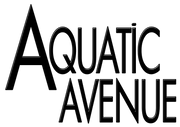
Seachem KanaPlex
Specifications:
- Broad Spectrum Antibiotic
- Treats fungal and bacterial fish diseases
- Easily absorbed through both skin and gills; ingestion not required
Types of Infections Treated
| Parasitic | Fungal | Bacterial | Viral | |
|---|---|---|---|---|
| KanaPlex |
 X X |
 X X |
Directions
Dosing in Water
Remove all invertebrates - these are extremely sensitive to medication. Turn off UV filters, ozone filters, and remove chemical filtration like MatrixCarbon™ and Purigen™. Use 1 measure (included) per every 20 L (5 gallons). Repeat this dose every 48 hours to a maximum of 3 doses. In cases of severe infections, it is possible to carry out two rounds of treatment back-to-back. However, this should only be done if fish show no signs of stress at the end of the first round.
Dosing in Food
Feed the medicated food mix (recipe below) every day until the infection clears or up to 1 week. This medicated food can be refrigerated or frozen between feedings.
- 1 scoop KanaPlex
- 1 scoop Focus™
- 1 tbsp food (preferably pellets or frozen food)
- A few drops of water if using a dry food
To enhance palatability use with GarlicGuard™ or Entice™.
After Treating
When the treatment period is over, KanaPlex™ can easily be removed using activated filter carbon like MatrixCarbon™. It does not linger in the substrate or filter media of the tank.
Active ingredients: kanamycin sulfate (32%) Inactive ingredients: excipients (68%)
Common Fish Diseases Treatable with KanaPlex
Bacterial infection
Eyes protrude or appear to be "popping out" of the head. Popeye is caused by a buildup of fluid behind the eye and is often seen in conjunction with Dropsy.Suggested Treatment Period:
1 weekBacterial infection
Eye appears clouded or filmed over. Cloudy Eye is a bacterial infection on the surface of the eye. It is common in tanks that are overcrowded or full of aggressive fish.Suggested Treatment Period:
1 weekBacterial infection
Fins appear shredded, frayed, or decaying. Fin Rot is frequently mistaken for damage from fin-nipping fish. Contrary to the name, this is actually caused by bacteria, not fungus.Suggested Treatment Period:
1 weekAeromonas hydrophilia.
Reddish streaks in the fins near the body or under scales. Common in goldfish. Associated with overcrowding and stress, particularly in goldfish and koi. It can also be caused by a virus.Suggested Treatment Period:
1 weekSymptom of internal damage
Fish appears bloated, scales stick out in a pinecone-like manner. Dropsy is a result of damage to the liver, causing fluid to build up in the fish. It often starts as bloat and progresses to Dropsy over time.Suggested Treatment Period:
1 weekSpecial Considerations
Dropsy is a sign of severe internal damage, not a symptom of a specific disease. It is treatable with KanaPlex if caught early, but sometimes the damage is too severe to respond to medications. The best defense is to catch internal infections early, before they progress to this stage.Columnaris
Damaged fins, ulcers and yellowish patches on gills, tissue on head and mouth eaten away. This infection appears gruesome, but is entirely treatable. It is common to see fungus-like tufts around the face and mouth in addition to deterioration of tissue. It is essential to catch this disease early to prevent long-term damage.Suggested Treatment Period:
1 weekSpecial Considerations
Columnaris is very contagious. If possible, remove the infected fish to treat separately in a hospital tank.A quick note about bacterial infections!
Most bacterial infections appear in conjunction with poor water quality or another infection (called a “primary infection”). Do a water test to ensure your water quality is still good and do water changes if necessary to improve your water quality before treating with a medication.
